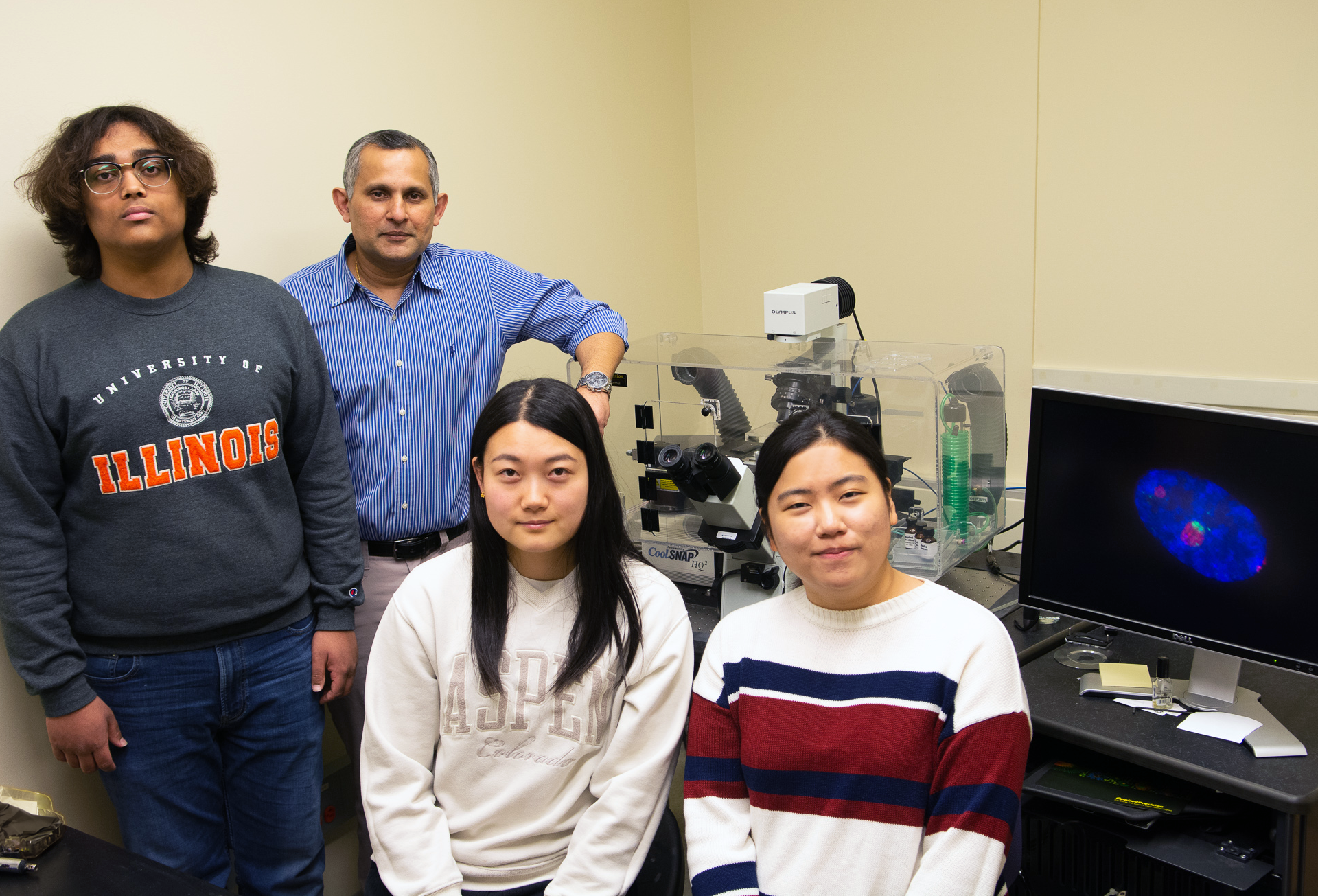
A new study by University of Illinois scientist Dr. Kannanganattu V. Prasanth and his team of researchers at Illinois and across multiple institutions has shed light on a novel family of noncoding RNAs (ncRNAs), and their significant impact on ribosomal RNA (rRNA) expression.
"This is a completely novel study ... and a new family of noncoding RNA that we have identified," said Prasanth, a professor of cell and developmental biology. These RNA molecules, termed SNUL RNAs (Single NUcleolus Localized RNAs), have opened a door to a previously unknown side of genetic regulation. The findings, published in eLife, reveal a mechanism by which rRNA expression may be controlled in the cell’s nucleoli, which are nuclear substructures where initial steps of ribosome biogenesis and maturation take place.
The expression and regulation of rRNA plays a pivotal role in protein synthesis. In human cells, ~400 copies of rRNA genes are arranged in tandem repeats within the short arms of five acrocentric chromosomes. These rRNA genes are arranged to form nucleolus organizer regions (NORs). Interestingly, 50 percent of these rRNA genes remain transcriptionally inactive, and their expression is tightly controlled by developmental and epigenetic programs. However, the underlying mechanism remained to be elucidated.
Through experimentation, Prasanth and his team demonstrated that SNUL RNAs form constrained sub-nucleolar territories associated with NOR-containing chromosomes, influencing rRNA expression in a way that was previously unknown. This not only expands our understanding of ncRNA functions but also uncovers the complexity of genetic regulation within the nucleolus.
Originally, this was not the objective of the lab’s project.
“We were not expecting to do this project. ... It was a very serendipitous discovery in the lab,” Prasanth said.
During a broader study in identifying localization of ncRNA in any specific nuclear compartment, one of the RNA probes hybridized to an RNA species in the nucleolus, which surprised the researchers.
“Based on what we know, every RNA or every protein should be distributed to every nucleolus in a cell, because there is nothing which restricts their distribution between nucleoli,” Prasanth said. These new findings challenge the prevailing understandings of RNA localization and function within the nucleolus.
By employing RNA-fluorescence in situ hybridization (FISH) and high-resolution imaging, long-read iso-sequencing, and various inhibition assays, they were able to characterize the SNUL RNAs' localization, sequence similarity to pre-rRNAs, and their impact on pre-rRNA processing and sorting within the nucleolus.
The lab found SNULs associate monoallelically with specific NOR-containing chromosomes, localizing in sub-nucleolar compartments alongside pre-rRNA. This expression and association of SNUL on only one allele of the ribosomal gene-containing chromosome arm may be activating or inactivating rRNA expression, Prasanth said. Although this complex regulatory mechanism still needs to be further studied, it illustrates how the body ensures the precise expression and processing of rRNA.
“This gives us an opportunity to understand how ribosomal gene differential expression is controlled. Maybe the SNULs could be one of the initial factors, which could be controlling this differential expression of ribosomal gene,” Prasanth said.
He points out the potential links between SNULs and disease progression, particularly in cancer, where changes in number and size of nucleoli, and dysregulation of ribosomal gene expression are recognized as common markers of tumorigenicity. The research opens new avenues for understanding a new side of ribosomal RNA regulation that was previously not explored.
“For me, at the end of the day, my passion is to discover new things. … You must have the right collaboration, the right combination to make exciting discoveries.” We are fortunate to collaborate with a group of outstanding scientists, from within and outside the campus.
Looking ahead, Dr. Prasanth's team is excited to further investigate the mechanisms by which SNULs regulate rRNA expression and their potential implications for understanding and treating diseases. These studies were supported by several federal and local agencies, such as National Institute on Aging, Cancer Center at Illinois, and Quantitative Cell Biology Center from National Science Foundation.
Photo: From left: Undergraduate student researcher Shivang Bhaskar; Kannanganattu V. Prasanth, professor of cell and developmental biology; and graduate students Minxue Liu and You Jin Song. Credit: School of Molecular & Cellular Biology.
